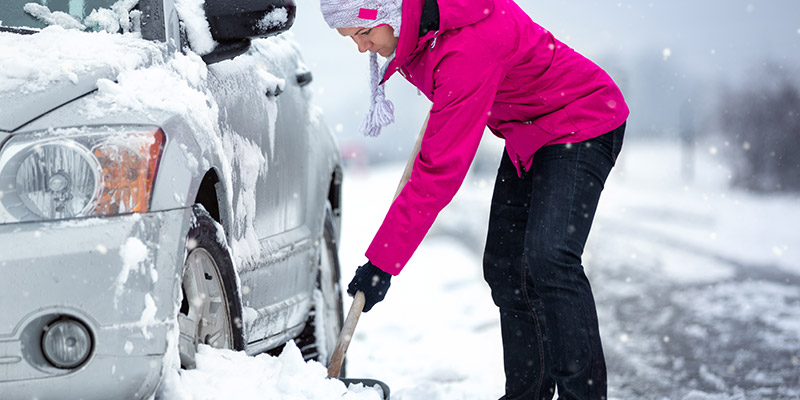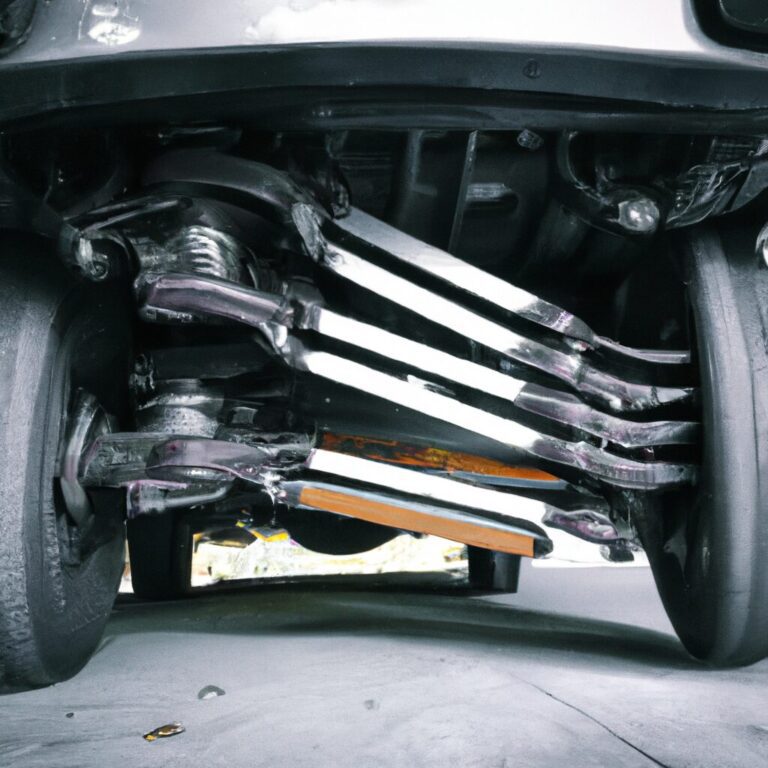How to Get Snow Out of Tires
To get snow out of tires, drive slowly, use a shovel to remove excess snow. Dealing with snow-clogged tires can be a frustrating situation, especially during winter months when snowfall is common.
Snow buildup in tires can affect your vehicle’s performance and safety on the road. However, there are simple and effective ways to remove snow from your tires. By following these methods, you can ensure better traction and stability while driving in snowy conditions.
In this guide, we will explore some practical tips and techniques to help you get snow out of your tires quickly and safely. Let’s dive in and learn how to tackle this common winter driving challenge.
Preventing Snow Build-up In Tires
Learn how to prevent snow build-up in your tires with these simple tips. Keep your traction and grip intact by following these easy steps to get snow out of your tires.
Choosing The Right Tires For Snowy Conditions
“` When it comes to preventing snow build-up in tires, selecting the appropriate tires for snowy conditions is crucial. Opt for tires with a tread pattern specifically designed for snow traction. Look for tires with the Three Peak Mountain Snowflake (3PMSF) symbol, which indicates they meet the standard for severe snow conditions. Consider options with special rubber compounds that remain pliable in cold temperatures to enhance grip on snow and ice. “`htmlUsing Tire Chains Or Snow Socks
“` In areas with heavy snowfall, tire chains or snow socks can be indispensable for maintaining traction. Chains can be attached to the tire tread to provide enhanced grip on snow and ice. Conversely, snow socks are fabric tire covers that offer similar benefits without the added bulk of chains. When using snow socks or chains, ensure they are the correct size for the tires and are installed securely to prevent slippage. Check your local regulations before using tire chains, as some areas may have restrictions on their use. “`htmlApplying Snow Traction Spray
“` Moreover, applying a snow traction spray to your tires can effectively reduce snow build-up and enhance traction. These sprays are designed to create a sticky layer on the tire surface, preventing snow from sticking and accumulating on the treads. Before applying the spray, thoroughly clean the tires to ensure maximum adhesion. As with any tire treatment, carefully follow the manufacturer’s instructions for application and reapplication intervals to maintain optimal effectiveness.
Credit: www.lesschwab.com
Removing Snow From Tires
Snow stuck in your tires can make driving hazardous. Learn simple techniques to clear it effectively.
Using A Snow Brush Or Broom
Do not fret over snowy tires, a snow brush or broom can help you clear them quickly and easily.
Employing Warm Water And A Soft Bristle Brush
Warm water and a soft bristle brush can soften the snow, making it easier to remove.
Using Snow Removal Tools
Specialized snow removal tools are designed to efficiently clear snow from tires, ensuring safety.
Diy Tips And Tricks
Struggling to get snow out of your tires? Check out these DIY tips and tricks to efficiently remove snow and prevent slipping. Simply using a tire brush, salt, or even driving in reverse can help you get back on the road safely in no time.
Frequent Tire Rotation Regular tire rotation helps distribute wear evenly. Parking on an Inclined Surface can aid melting the snow. Using a Windshield Cover can prevent snow buildup.- Rotate tires every 6,000 miles
- Park with front tires on higher ground
- Use windshield covers during snowfall

Credit: www.progressive.com
Professional Services
When it comes to removing snow from tires, professional services can provide effective solutions to ensure the safety and performance of your vehicle. There are several options for seeking professional assistance in getting snow out of tires, including visiting a car wash and consulting with a tire specialist.
Visiting A Car Wash
Visiting a car wash is a convenient option for removing snow from tires. Car wash facilities often offer services specifically designed to remove snow and debris from both the exterior and interior of vehicles. Their advanced equipment and methods can help dislodge compacted snow from the treads and grooves of your tires, enhancing traction and stability on the road.
Consulting With A Tire Specialist
Consulting with a tire specialist can provide personalized advice and services to address snow buildup in tires. A tire specialist has a deep understanding of tire technology and can recommend the most suitable methods for removing snow without causing damage to the tires. Whether it involves specialized equipment or treatment products, a tire specialist can offer tailored solutions to ensure your tires are free from snow and ready for safe driving.
Safe Driving Practices In Snowy Conditions
To remove snow from tires, use a snow brush or tire scraper carefully. Ensure tires are clean for proper traction and safe driving in snowy conditions. Regularly check and clean tires to prevent buildup and maintain road grip.
Driving in snowy conditions can be challenging and require special precautions. In order to ensure your safety on the road, it is important to follow safe driving practices when the snow starts falling. Here are three key practices to keep in mind:
Maintaining Proper Tire Pressure
Maintaining the proper tire pressure is crucial when driving in snowy conditions. Cold temperatures can cause tire pressure to drop, which can affect your vehicle’s traction. To ensure optimal performance, regularly check your tire pressure and inflate them to the manufacturer’s recommended levels. This will help to improve your vehicle’s grip on slippery roads and reduce the risk of accidents.
Adjusting Driving Habits
When driving in snowy conditions, it is essential to adjust your driving habits to ensure your safety and the safety of others. Keep these tips in mind:
- Drive at a moderate speed to maintain control of your vehicle.
- Keep a safe following distance to allow for proper braking.
- Use smooth and gentle movements when accelerating, braking, and steering.
- Avoid sudden maneuvers, such as sharp turns or lane changes.
- Use your vehicle’s headlights to improve visibility and make yourself more visible to other drivers.
- Stay alert and avoid distractions while driving.
By adopting these driving habits, you can significantly reduce the risk of skidding, losing control, or getting into an accident in snowy conditions.
Keeping A Winter Emergency Kit
Preparing for the unexpected is essential when driving in snowy conditions. In case of an emergency or unforeseen circumstances, it is important to have a winter emergency kit in your vehicle. Consider including the following items:
- Warm blankets and extra clothing
- A flashlight with extra batteries
- An ice scraper and snow brush
- A shovel
- A bag of sand or kitty litter for traction
- A first aid kit
- Non-perishable snacks and water
- A fully charged mobile phone and a car charger
Having these supplies readily available can help you during an emergency situation and ensure your safety until help arrives. Remember to regularly check and restock your winter emergency kit to keep it up to date.

Credit: www.amazon.com
Frequently Asked Questions On How To Get Snow Out Of Tires
How Do You Get Snow Off Tires?
To get snow off tires, use a snow brush or scraper to remove snow. Drive slowly to shake it off.
How Do You Get Tires Unstuck From Snow?
To get tires unstuck from snow, use traction aids like sand, salt, or kitty litter. Rocking the vehicle back and forth can also help. Adjust tire pressure if possible, and use a shovel to clear snow from around the tires.
Avoid excessive flooring of the accelerator.
How Do You Melt Snow On Tires?
To melt snow on tires, use a snow brush or warm water to clear the snow and ice. Do not use hot water as it can damage the tires. Ensure the tires are clean and dry before driving to improve traction and prevent accidents.
Can I Pour Hot Water On Frozen Tires?
No, you should not pour hot water on frozen tires. The sudden temperature change can cause the tires to crack and potentially damage them. It’s best to allow the tires to thaw naturally or use a safe method like using a de-icing spray or warm water.
How Does Snow Affect Tire Performance?
Snow affects tire performance by reducing traction and grip, leading to longer braking distances and increased risk of skidding.
Can I Drive With Snow On My Tires?
Driving with snow on your tires is not recommended as it can cause imbalances, reduced traction, and potential damage to your vehicle.
How Can I Remove Snow From My Tires?
To remove snow from your tires, use a snow brush or shovel to gently clear the snow away. Avoid using sharp tools that could puncture the tires.
Conclusion
In a nutshell, removing snow from your tires is essential for safe driving in winter. By following the tips and techniques outlined in this post, you can effectively clear the snow and enhance your vehicle’s performance on snowy roads. Remember to check your tires regularly and be prepared for any weather conditions.
Safe travels!

